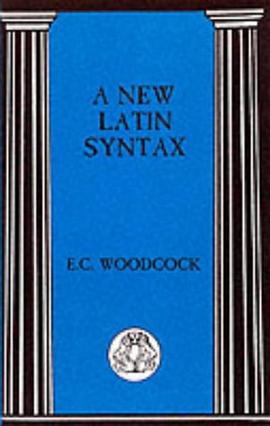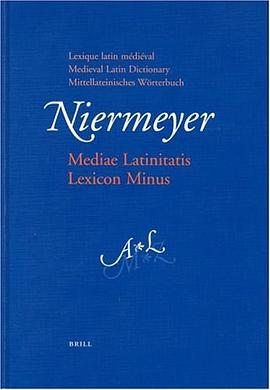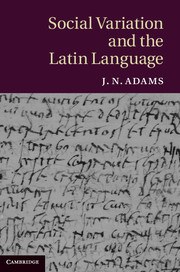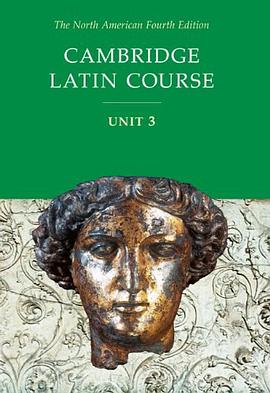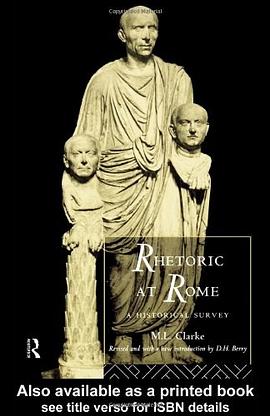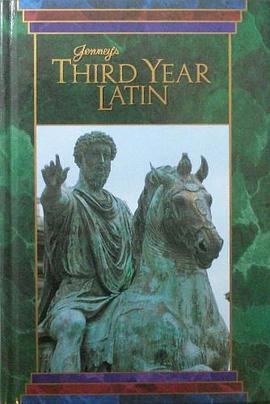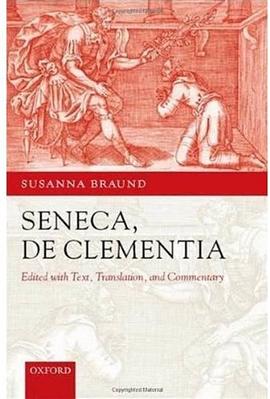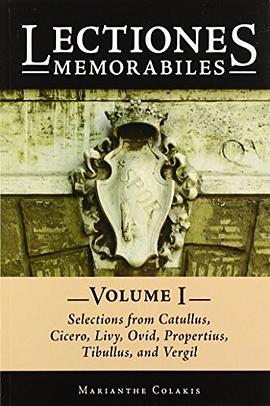

具体描述
In the Preface to this reader containing selections from Latin Republican and Early Imperial Latin literature, Marianthe Colakis notes: “This book was created for students preparing for the International Baccalaureate examination in Latin. The selections therefore comply with the IB syllabi for the Vergil, Love Poetry, and Women options” (ix). These parameters help explain the somewhat idiosyncratic nature of the choices in what is generally a well thought-out, well organized, well annotated reader that offers the student a sampling of some of the more commonly read authors of Roman literature and their different genres and styles. They also set this particular reader apart from the many other Latin anthologies available and clearly indicate its intended audience.
The book is organized into three large sections based on the themes of the IB Latin syllabus that it reflects: Vergil, Love Poetry, and Women. The sections are of uneven length and are divided into smaller sections focusing on specific authors and works. The Vergil portion contains one section on the Aeneid, containing two passages, and one on the Georgics, containing one passage. The Love Poetry section contains four collections of passages: two for Catullus and one each for Propertius and Tibullus. The Propertius and Tibullus sections, and one of the Catullus sections, each contain several poems apiece. The Women section contains seven sets of passages, one from each author represented in the reader. Colakis indicates whether each reading selection is intended for the Standard Level (SL) or the Higher Level (HL).
Each of the three large thematic sections has a general introduction giving background information to help the reader. Each collection or set of passages has its own introductory essay offering a short discussion the historical background, genre, literary influences, meter, and other facets that illuminate the author and the selections. Each passage presents unadapted Latin text, without macrons. Each selection is introduced by a brief preface and accompanied by copious notes. In each section the text occupies approximately the top half to two-thirds of the left-hand page; the rest of that page and all of the facing page is occupied by the notes. These are in slightly smaller type and each is introduced by a lemma in boldface. The notes typically give information illustrating the sense of the passage, remarks about unusual word meanings and forms, identification of names, and notes about rhetorical and stylistic figures. They generally do not remark on grammatical form and function, e.g. why a particular word is in the ablative. The amount of white space provided by the margins and the spacing of the text and notes is generous without being excessive; visually each page is very easy to navigate and is full without appearing cluttered.
There are three short appendices: a Historical Timeline, a description of the meters used in the verse passages, and a “Glossary of Rhetorical Terms, Figures of Speech, and Metrical Devices.” This last section contains short definitions of terms that have been cited in small caps in the notes accompanying each reading selection. The book does not include an overall glossary of Latin vocabulary used in the reading passages; Colakis remarks, “We are assuming that students have access to a good Latin dictionary, and that they are being taught to use it to their best advantage when encountering a passage for the first time” (ix).
There are fifteen black-and-white illustrations scattered throughout the book, accompanying the passages and sections they have been chosen to illustrate. These range from early modern paintings on classical themes to photographs of artifacts, sculptures, etc. The illustrations are infrequent, so they enhance and divert rather than distract the reader from focusing on the reading selections. There are also three black- and-white maps at the beginning: The Mediterranean (showing essentially the Roman Empire at the time of Augustus), The Ancient World (showing Eurasia and North Africa from Britain to India), and The Wanderings of Aeneas. As with the illustrations, they help provide context but do not distract from or overwhelm the text.
Although, as noted above, the selections in this volume are all from the Late Republic and Early Principate and thus might seem to have been chosen represent that period of Roman literature, this fact in itself was apparently not a criterion for their inclusion. Colakis’ second volume of Lectiones Memorabiles contains selections from Horace and Lucretius, as well as Seneca, Suetonius, and Tacitus. These are all passages taken from the History and Good Living portions of the IB Latin syllabus. So the fact that the passages in the first volume all come from the so-called “Golden Age” of Latin literature is a serendipitous coincidence, one which gives the reader historical and literary context for these passages in addition to the themes stressed in the IB syllabus.
The passages themselves hit a number of the highlights that students of Golden Age Latin literature might be expected to read: the beginning of Aeneid 1; the Aristaeus episode from Georgics 4; a representative selection of Catullus, including poems 3, 5, 8, 45 (but not 2), an excerpt from 64, and a number of the elegiacs, including 85 (but not 70). There is only one poem from book 1 of Tibullus and none from book 2, but several from book 3 (Lygdamus and Sulpicia); although these are featured in the “Love Poetry” section, the inclusion of all the Sulpicia poems presumably satisfies the criteria for the “Women” section as well. Propertius is represented by five poems chosen from books 1, 2, and 3 (but not 1.3). Ovid is represented just by Heroides 1, Cicero by the well-known passage from the Pro Caelio where he summons the image of Appius Claudius to rebuke his descendant Clodia. The only other prose passage is the story of Cloelia from book 2 of Livy, included in the “Women” section.
Every reader has personal favorite passages, and might lament the lack of those that were not chosen for inclusion and be puzzled by some of the specific choices that were made. But despite—or perhaps because of—its idiosyncracies, this anthology offers a wonderful introduction to unadapted poems and excerpts from the literature of the Late Republic and Early Principate. Although specifically designed for those preparing for the IB Latin exam, any intermediate-to-advanced students will find the selections in this reader interesting and valuable, and, one hopes, a spur to further reading. The lack of detailed grammatical information in the notes shows that this book is aimed at students who already have a good grasp of the grammar; the expectation that students will have and know how to use a good dictionary, along with the abundance of information on historical and literary context suggests that this book is intended for students working with a good, knowledgeable teacher, who can guide their reading, answer their grammatical questions, show them how to use dictionaries, commentaries, and reference grammars, and help flesh out the context of these passages. Students who already have enough grammar under their belt that they are able to devote some attention to questions of genre, historical and literary context, and poetic and rhetorical figures will find this book rewarding, particularly for its notes and introductory essays. Students who are just starting to find their way around actual Latin texts and who need fuller, more detailed notes, and teachers who rely on the textbook to communicate all relevant and necessary information to the student, might find that this book does not work as well for them. More advanced students who already have experience reading unadapted Latin with a commentary and dictionary might be able to use this volume for self-study. But as a first exposure to unadapted selections from classical Latin literature, this would work very well for a class with a dedicated teacher.
In sum, though it was designed specifically for students preparing to take the International Baccalaureate Latin exam, this book would work well both as an introduction to unadapted Latin poetry (since all but two passages in the book are in verse) for intermediate-to-advanced Latin students looking to deepen their understanding beyond simply translating, and as a sort of “tasting menu” introducing students to most of the major authors of the “Golden Age” of the Late Republic and Early Principate.
作者简介
目录信息
读后感
评分
评分
评分
评分
用户评价
相关图书
本站所有内容均为互联网搜索引擎提供的公开搜索信息,本站不存储任何数据与内容,任何内容与数据均与本站无关,如有需要请联系相关搜索引擎包括但不限于百度,google,bing,sogou 等
© 2025 book.quotespace.org All Rights Reserved. 小美书屋 版权所有


